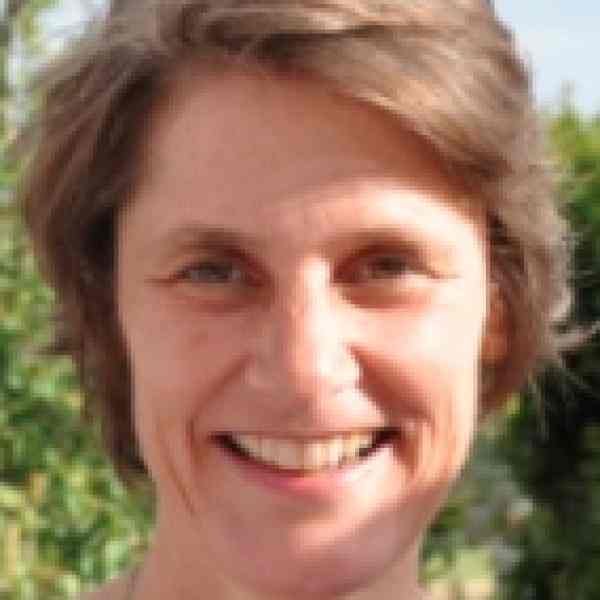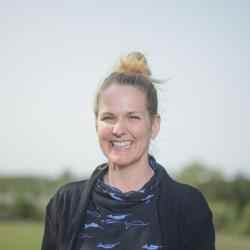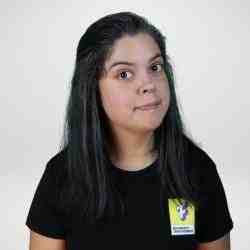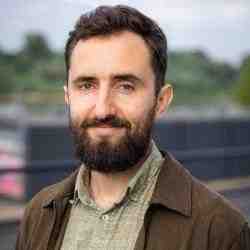Introduction
Anne Charpy has developed a unique approach to restore community in France’s poorest urban districts, by connecting disempowered inhabitants with each other and with mainstream society. In doing so, Anne restores their trust in each other as well as in public and private institutions. Through this model, millions of marginalized people in low-income areas ridden with high levels of illiteracy, unemployment, and crime are experiencing improved standards of living.
L'idée nouvelle
In order to break with the feeling of powerlessness and disengagement of many inhabitants stuck in low-income areas, Anne has created a virtuous cycle that mobilizes in positive economic and social value chains local public and private institutions, local leaders, and inhabitants to engage in their community.
Targeting some particularly marginalized urban districts, Anne employs inhabitants, called Neighbors, who have been identified for their leadership skills and desire to engage in their community, to go door-to-door to provide useful information and education in culturally- and language-relevant ways, question inhabitants about their challenges, get feedback, and connect them to relevant rights and services for which they are eligible. These marginalized populations are typically low users of public and social services because they fail to navigate them and do not trust the institutions that carry them out. In order to have the legitimacy to carry these messages and to fund her actions, Anne identifies public utility companies and local government institutions who have a strong need to connect with excluded inhabitants in order to fulfill their missions and convinces them to use a unique door-to-door approach.
The role of Neighbors extends much beyond their assignments on behalf of institutions: they are trust- and bridge-builders within their community. Indeed, they often are the only points of contact inhabitants have with the outside world. Many residents have recently immigrated, are unemployed, cannot communicate with neighbors who speak different languages (up to 80 in a single neighborhood), and are afraid of the local climate of insecurity, which leads them to stay all day inside their homes. The Neighbors’ intervention allows them to connect with society, renders them some self-worth, and provides them with useful information that they can easily use. Additionally, Neighbors makes sure to link them with other inhabitants and with opportunities to break their isolation: residents who wish to do so are invited to become Friends, i.e. volunteers who take concrete action in their community through the organization of community events and participation in local activities.
After only two years, Anne’s model is expanding at a rapid pace, aided by its simplicity. It is currently operating in four of the most marginalized neighborhoods around Paris, where it reaches over 10,000 people. It is building sustainable bridges among inhabitants and with institutions, allowing for the emergence of local leaders and triggering a positive dynamic towards people’s empowerment.
Le problème
The French government has designated 700 urban neighborhoods as Sensitive Urban Areas (ZUS) which represent 4.5 million people who struggle with a broad array of socioeconomic challenges. In recent decades, these neighborhoods have attracted immigration because of a high density of social housing and affordable rent. They also have been a priority policy area with massive public investment in building rehabilitation, literacy, and employment programs (the government invested 23 billion euro between 2004 and 2012), as well as the cradle for many citizen organizations (COs). However, since the 1970s and in spite of these efforts, second and third generations of immigrants have been struggling to lift themselves out of poverty and out of their neighborhoods. A recent evaluation of the National Urban Policy of the past decade points out that there has been no significant social and economic progress of ZUS inhabitants.
The lack of role models or view outside the neighborhood translates into a strong feeling of powerlessness and exclusion from mainstream society. On average, a person who lives in such a neighborhood only steps outside their homes twice a day, versus four times for the national average. This disempowerment and exclusion are tied to a deep cultural, social, and economic exclusion: 36 percent of people live under the poverty line (versus an average of 12 percent in urban areas); illiteracy reaches 14 percent (versus a national average of 8 percent); 30 percent do not have access to the Internet (versus 10 percent nationally); and certain neighborhoods represent more than 80 origins and as many languages. As such, an estimated 30 percent of inhabitants are deeply marginalized; they do not have the ability or the confidence to navigate information about social services and public utilities, to ask for special programs or tariffs that have been designed for them, or undertake efforts to engage in community life.
The social and economic ladder in these neighborhoods is stuck: the most carefully designed policies and programs are useless if they do not reach the people whom they are meant. The fewer people that engage in the community, the more unlikely others will engage, and the lower the hope that the situation can evolve for the better. There is an opportunity to connect inhabitants with the numerous efforts of public institutions, utility companies, and COs to trigger a virtuous cycle of empowerment and a positive dynamic of community engagement. However, in order to be effective, such an approach has to take into consideration the geographic, social, and cultural circumstances of local populations.
La stratégie
Anne has targeted some of France’s poorest urban districts to pilot and demonstrate the impact of her positive socioeconomic value chain. She has therefore effectively mobilized the resources of local public institutions and public utility companies, who have entrusted her with a broad array of assignments for Neighbors to have a first step into local inhabitants’ homes. For example, they have led information campaigns about the drinkability of tap water in neighborhoods where up to 30 percent of inhabitants came from contexts where bottled water was the only safe option; they have notified inhabitants about new transportation schemes and reduced transportation prices; they have educated them about selective waste disposal; they have questioned them about the problems they were encountering in their housing projects; etc. Today, Anne’s organization, VoisinMalin, employs 10 Neighbors on a part-time basis in each of the four urban areas where it operates, with the objective of reaching 10,000 inhabitants a year in each of them, or 80 percent of the local population. These Neighbors successfully connect residents with information and services, but also with other residents who share the same language or simply the same floor. They have also started recruiting an army of volunteers, Friends, who are now taking a leadership role in organizing community events and taking an active part in community life.
Anne is careful to build a strong, sustainable presence in each community where she operates. In order to do so, she recruits local managers who handle relationships with partners and supervise the work of Neighbors. Anne also embeds the dynamic within the community through a unique annual event in each area which brings together local officials, public utility representatives, Neighbors, Friends, and inhabitants. For one day every year, all these stakeholders experience a unique facilitated conversation and are treated as peers, whereas they would otherwise never have met. This creates a new situation of accountability and dialogue, dramatically changes their perspective on each other, and incentivizes them to further champion Anne’s work.
Anne’s expansion strategy relies on a strong partnership approach. She leverages the needs and challenges of companies and administrations to enter a carefully selected urban district, recruit Neighbors, and explore social and economic issues within the area. This allows her to demonstrate the impact of her approach and recruit institutional champions for her work. These champions are encouraged to introduce her to colleagues and peers in other neighborhoods, who in turn become champions and allow Anne to build an initial portfolio of assignment to convince the next local government to support the launch of her organization and the recruitment of local Neighbors. With strong evidence in hand, Anne is now ready to accelerate her spread. She is identifying national public utility companies with operations in many ZUS across France and is building a bundled offer for them to work with Neighbors in several cities at once.
La personne
From early on, as the eldest of seven children Anne used creativity, empathy and leadership qualities to deal with her daily life. After studying management, she moved to Chile with her husband, where she worked with a CO that supported microentrepreneurs in defending their rights, and played a key role in designing social security and microfinance systems. She was highly inspired by the solidarity and strength of the local community where she worked, and developed a strong interest in community organizing which she then explored in various contexts around the world.
Returning to France, Anne had a strong desire to engage in the local urban development of a low-income area and experiment with a headful of creative ideas. She found a job as director of the public interest group of two neighborhoods in the south of Paris, a local government entity aimed at facilitating collaboration and joint actions among institutions. She piloted several new programs, including the development of a network of inhabitants who could provide translation to help connect the population and the local education system, but was soon faced with the rigid mentality of civil servants and the challenge to fund such an initiative with public funds. Instead of trying to change public institutions, she realized that to create deep, sustainable change she had to start her own organization and to find a virtuous, independent funding mechanism.
Since 2011, Anne has managed to launch her model in some highly complex, politicized environments and to engage a broad range of stakeholders who have become true champions of her work.




